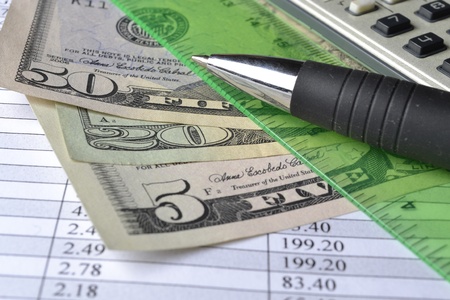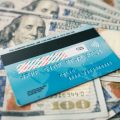1. Understanding the Purpose of an Emergency Fund
Building an emergency fund is one of the most important steps toward financial stability in the United States. But what exactly is an emergency fund, and why do you need one? Simply put, it’s a savings account set aside specifically to cover unexpected expenses that can disrupt your daily life or threaten your financial well-being.
Why Emergency Savings Are Essential
Life can throw curveballs at any time—whether it’s a sudden job loss, a medical emergency, or a major car repair. Without emergency savings, you might find yourself relying on high-interest credit cards or loans, which can quickly spiral into unmanageable debt. Having this financial cushion gives you peace of mind and helps you avoid making tough decisions under stress.
Common Unexpected Expenses Covered by an Emergency Fund
| Type of Expense | Examples |
|---|---|
| Medical Emergencies | Unplanned hospital visits, urgent care, out-of-pocket costs not covered by insurance |
| Job Loss or Reduced Income | Covering bills and daily expenses while searching for new work |
| Car Repairs | Major breakdowns, accidents, replacing tires or essential parts |
| Home Repairs | Fixing a broken furnace, plumbing issues, roof leaks |
| Family Emergencies | Travel expenses to assist family members in crisis or pay for sudden childcare needs |
| Unexpected Bills | Tax bills, increased utility costs, legal fees |
The Role of Emergency Funds in American Life
In American culture, having an emergency fund is seen as a key part of being financially responsible. It’s about more than just saving money—it’s about protecting your lifestyle and reducing financial anxiety when life doesn’t go as planned. By understanding the purpose behind an emergency fund, you’re already taking a smart first step toward greater financial security.
2. Evaluating Your Unique Financial Situation
When it comes to building your emergency savings, there’s no one-size-fits-all answer. Your ideal fund size depends on your personal circumstances and a few key factors. Let’s break down what you should consider to calculate the right amount for you.
Key Factors That Impact Your Emergency Fund
Income Stability
If you have a steady paycheck from a secure job, you may not need as large an emergency fund as someone with variable or unpredictable income. Freelancers, gig workers, and those in industries prone to layoffs should save more as a safety net.
Household Size
The number of people you support directly impacts how much you need in savings. More family members usually mean higher monthly expenses and a greater need for financial protection.
Monthly Expenses
Your essential expenses—like rent or mortgage, utilities, groceries, insurance, and transportation—should be the foundation for your emergency fund calculations. Track these costs carefully to get an accurate estimate of your needs.
Job Security
Consider how easy it would be for you to find a new job if you lost your current one. Those in high-demand fields might bounce back quickly, while others could face longer gaps between jobs and therefore require more savings.
Quick Reference Table: Factors Influencing Emergency Savings
| Factor | How It Affects Your Fund Size | Who Should Save More? |
|---|---|---|
| Income Stability | Unstable income means higher risk | Freelancers, seasonal workers |
| Household Size | Bigger households = bigger needs | Families, caregivers |
| Monthly Expenses | Higher fixed costs increase fund size | Anyone with high recurring bills |
| Job Security | Lack of security means saving more is smart | Workers in volatile industries |
How to Calculate Your Ideal Fund Amount
A common rule of thumb is to set aside three to six months’ worth of living expenses. However, after evaluating the factors above, you may find you need more or less than that range. Start by adding up all your necessary monthly expenses, then multiply by the number of months that makes sense based on your situation.
![]()
3. General Guidelines: The 3-to-6 Month Rule
If you’ve ever Googled how much you should have in your emergency fund, you’ve probably come across the “three to six months” rule. This is classic financial advice in the U.S., and it’s still a good starting point for most people. But what does it actually mean, and how do you figure out what that amount looks like for your life?
What Does the 3-to-6 Month Rule Mean?
The idea is simple: save enough cash to cover your essential living expenses for three to six months in case you lose your job, face a medical emergency, or have another major unexpected expense. It’s all about buying time and peace of mind while you get back on your feet.
Breaking Down Essential Living Expenses
Not every expense counts. Focus on what you absolutely need to pay each month:
| Expense Type | Examples |
|---|---|
| Housing | Rent or mortgage, utilities |
| Food | Groceries, basic household supplies |
| Transportation | Car payment, gas, insurance, public transit |
| Insurance & Healthcare | Health insurance premiums, prescriptions |
| Minimum Debt Payments | Credit cards, student loans, personal loans |
| Other Essentials | Childcare, phone bill, internet (if needed for work) |
How Much Do Most Americans Actually Need?
This guideline might look different depending on your household situation. For example:
- If you’re single with no dependents: You may be comfortable with three months’ expenses.
- If you have kids or others relying on your income: Six months (or even more) is safer.
- If your job is unstable or your income varies: Aim for closer to six months.
- If you have a dual-income household with stable jobs: Three months may be enough.
Example Calculation Table
| Monthly Essential Expenses ($) | 3-Month Fund ($) | 6-Month Fund ($) |
|---|---|---|
| $2,500 | $7,500 | $15,000 |
| $3,500 | $10,500 | $21,000 |
| $4,200 | $12,600 | $25,200 |
| $5,000 | $15,000 | $30,000 |
The three-to-six month rule isn’t perfect for everyone—but it’s a solid baseline that helps most American families prepare for life’s curveballs.
4. How to Calculate Your Ideal Emergency Fund
Step 1: List Your Essential Monthly Expenses
The first step in figuring out your emergency fund is to know exactly how much money you need each month to cover the basics. Grab a pen and paper, open a spreadsheet, or use your favorite budgeting app. List out all your essential expenses—these are the costs you can’t skip if times get tough.
Common Essential Expenses:
| Category | Monthly Amount ($) |
|---|---|
| Rent/Mortgage | |
| Utilities (electricity, water, gas, trash) | |
| Groceries | |
| Transportation (car payment, gas, insurance, public transit) | |
| Health Insurance/Medical Costs | |
| Minimum Debt Payments (credit card, student loan) | |
| Phone & Internet | |
| Childcare or Pet Care (if needed) | |
| Total Essential Expenses |
Step 2: Add Up Your Total Essentials
Add together all the amounts from your list. This total is the minimum you’d need each month just to keep things running if you lost your income or faced an emergency.
Step 3: Choose Your Savings Target (Months Covered)
The general rule of thumb is to save enough to cover 3 to 6 months’ worth of essential expenses. If your job is stable and you have a strong support system, 3 months may be enough. If your income is unpredictable or you have dependents, aim for closer to 6 months—or more if it helps you sleep better at night.
Emergency Fund Calculator:
| Your Total Monthly Essentials ($) | Number of Months to Cover | Your Target Emergency Fund ($) |
|---|---|---|
| [Enter Amount] | [3–6] | [Monthly Total x Number of Months] |
Example:
| Total Essentials ($) | Months Covered | Savings Goal ($) |
|---|---|---|
| $2,500 | 4 months | $10,000 |
Step 4: Personalize for Your Lifestyle & Comfort Level
Your situation is unique! Think about factors like job security, health concerns, family responsibilities, or living arrangements. Adjust your savings target so it makes sense for you—not just because someone online said so.
Checklist for Personalizing Your Fund:
- How secure is your job or income?
- Are you self-employed or a freelancer?
- Do you have kids or dependents?
- Do you own or rent your home?
- Could friends/family help in an emergency?
The right number gives you peace of mind. Once you’ve set your goal, break it down into smaller monthly savings targets so building your fund feels doable.
5. Tips for Building and Maintaining Your Fund
Start Small—But Start Now
If building up several months’ worth of expenses sounds overwhelming, remember that every little bit helps. Even putting aside $10 or $20 a week adds up. The key is consistency—make saving automatic by setting up direct transfers from your checking account to a savings account right after payday.
Grow Your Fund with Smart Strategies
- Set Realistic Goals: Break your total emergency fund target into smaller monthly or quarterly milestones.
- Cut Unnecessary Expenses: Review subscriptions, dining out, or impulse buys and redirect those dollars into your fund.
- Use Windfalls Wisely: Tax refunds, bonuses, or stimulus checks can give your emergency fund a big boost.
- Track Your Progress: Use budgeting apps or simple spreadsheets to monitor how close you are to your goal.
Keep Your Emergency Fund Secure and Accessible
Your emergency fund should be easy to access in a crisis but not so convenient that you’re tempted to dip into it for everyday spending. Here’s how different American bank accounts stack up for emergency savings:
| Account Type | Pros | Cons |
|---|---|---|
| High-Yield Savings Account | Earns higher interest; FDIC insured; accessible online | Might take 1–2 days to transfer funds |
| Money Market Account | Slightly higher interest; check-writing features; FDIC insured | May have minimum balance requirements or monthly fees |
| Traditional Savings Account | Simple; offered at most banks; FDIC insured; immediate access if linked to checking | Lowest interest rates; easier to spend impulsively if tied to debit card |
| Certificates of Deposit (CDs) | Higher interest rates for longer terms; FDIC insured | Penalties for early withdrawal; not ideal for emergencies that require fast cash |
Tip:
A high-yield savings account is usually the best place for your emergency fund—safe, separate from daily spending, and earning more than a regular savings account.
Review and Adjust Regularly
- Update After Major Life Events: If you get married, have kids, buy a home, or change jobs, recalculate your monthly expenses and adjust your goal.
- Treat Withdrawals Seriously: If you do use the fund, rebuild it as soon as possible—think of it as an insurance policy for your peace of mind.
- Avoid Mixing Funds: Keep your emergency savings separate from vacation or holiday money so you don’t accidentally spend what you might need later.


